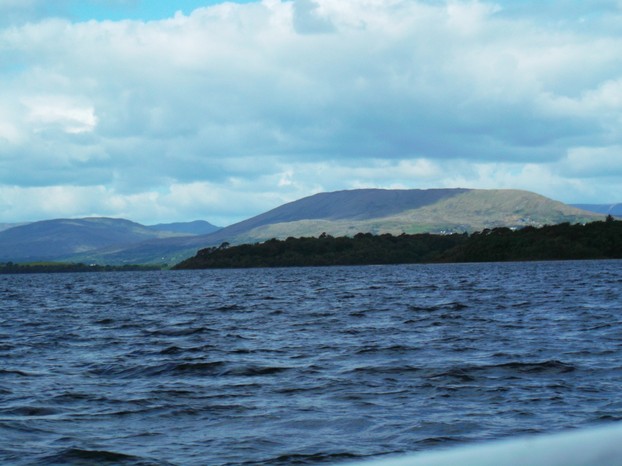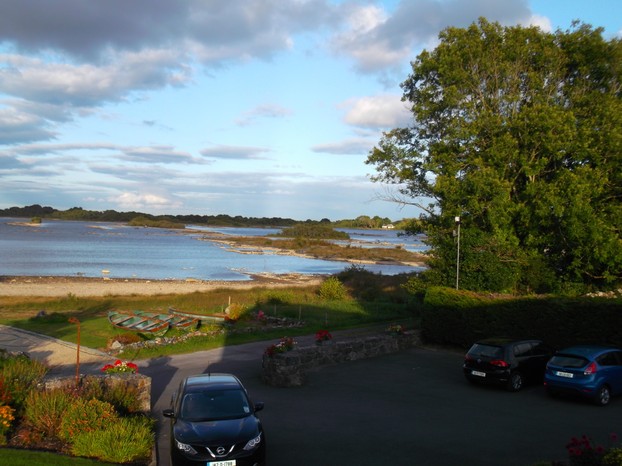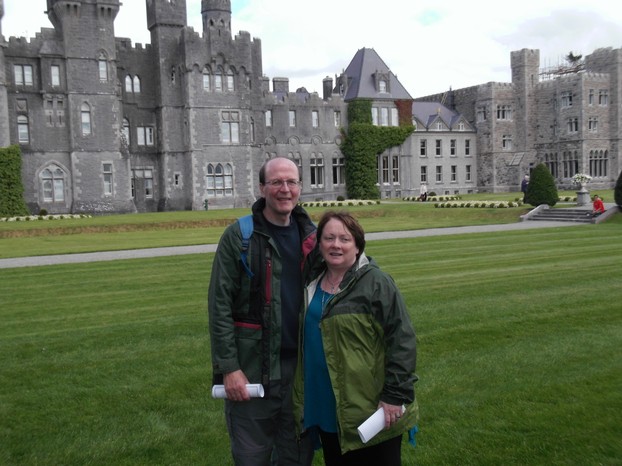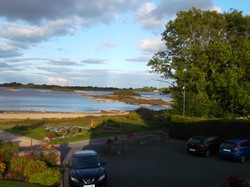The name Corrib is a corruption of Lough Oiribsean or Oiribsiu, the name being a local name for a widely worshipped pagan deity, Mannanan Mac Lir. Lir was a sea god and his son Mannanan, whose name is linked to the name Man in Isle of Man, was said to ride a chariot pulled by magical steeds across the waves. But there is very little genuine history from the area until the Middle Ages. Marine archaeologists have uncovered remains of dug-out canoes, so it seems that there was boat commerce on the lough, and as mesolithic and neolithic flint artefacts have been found in the region, it is likely that boat commerce was part of the life of the lough from an early time. A boat from the Viking age carrying three axe heads was found, but whether or not it was a Viking boat is not clear. The remains of a Victorian pleasure yacht were also located. Ireland is protective of its archaeological heritage and so special government permission to dive to the wreck sites is required.
So far no one has located any Crannogs on the lough. These are pile dwellings constructed on artificial islands, or on islands selected and enhanced for the purpose. The ancient and mediaeval Irish were expert crannog builders, so I would not be surprised were crannog remains to be discovered.
But the mediaeval period saw some conventional structures erected on larger islands. There are remains of a mediaeval monastic building in Inish na Goile, and from the nineteenth century some peasant cottage remains are still present. Inish means island. Another name for an island is illaun, and one island on the lough is known as Ardillaun, high island.
The lough was in the territories of the Anglo-Norman Burkes [De Burgos, Bourkes] who had been awarded land in Connemara and who in 1333 finally abandoned their Anglo-Norman identity and declared themselves Irish. The Burkes were in long-term conflict with the "Ferocious" O'Flaherties and their faithful allies, the Anglo-Norman Joyces. One story is told of magical interference or assistance, depending on whether you support the Burkes or the O'Flaherties. An O'Flaherty chief had left his wife and family for safe keeping on one of the islands while he attacked the Burkes, but was defeated. The result was that his family were stranded on the islet. Enter the Sidhe, the fairies, who looked kindly on the O'Flaherties because they had respected fairy territory. The magical fair folk brought provisions to the stranded O'Flaherties until they were rescued. Make of this what you will.
The island known as Castle Kirk Island [Caislean na Circe] is near the Lough's northern shore and contains the remains of a tower house dating back t0 1118, which makes it pre-Norman. A Caislean [pronounced castleen] is a small castle. It is considered an important archaeological site because, despite its now ruined state [Thanks Cromwell!] it is one of the oldest stone buildings in Ireland. It at one time housed and protected Grainne O'Malley, the pirate queen of the O'Malley Clan, who was married to an O'Flaherty chief. She is sometimes miscalled Grace O'Malley.
Also at the North end, in the Mayo part of Corrib, is Ashford Castle, an elegant nineteenth century country house and lodge once voted the world's best hotel. It stands on Leaf Island and is connected to the shore by a short bridge. The picture below shows the person who provided the photographs for this article at Ashford Castle with her husband.












 Pilgrimage. A review15 days ago
Pilgrimage. A review15 days ago
 Leo the Fourteenthon 05/09/2025
Leo the Fourteenthon 05/09/2025
 The Melsonby Hoardon 03/25/2025
The Melsonby Hoardon 03/25/2025



Comments
Most peoplevdon't know the etymology of then name, and that certainly goes for most English.
The last paragraph to the first subheading, The geography of the lough, brings in Inish na goile.
Online sources consider as one meaning "island in the womb." Might that be how locals specifically and east-ponders in general designate the English equivalent?
The Norman identity seems to have blended into English quite easily, so there was Not much to be gained by retaining it.
I think that the Buries had been marrying native Irish for so long that their sense of identity changed.
As far as I am aware, over the centuries they "acclimatised " and blended in to consider themselves Irish. This was more especially when The Normans were no longer the ruling house.
Is it known why the Bourke/Burke/de Burgos family decided in 1333 -- date mentioned in your fourth paragraph under your subheading The Lough in History -- that they were Irish, not Anglo-Norman?
I think that it depends on how high up the beach you are. Much of the upper reaches of Southport beach is never covered by the tide.The rest of the beach has a marine fauna,of which razor clams are common,so it must be a habitat exposed to brine.
Thank you, Frank and Veronica!
Do raised beaches such as Southport and St Anne's depend more upon ground or rain water for their plant life? If the former, is it in amounts sufficient for vegetation to grow but not take over the sandy surface?
(Vegetation all over the place might make some beach-goers consider razing -- ;-D -- a raised beach.)
Britain is geologically tilting, with land on the South East sinking slightly, whereas in the North West, that is North West England and Western Scotland there is an upward tilt.
Southport is not a typical raised beach, as its rather expansive sands are the result of the infilling of a coastal lake or marsh with sand over millennia. Yet it is rising as it is in NW England.
I think that it is useful to describe a raised beach as a fossil beach which was once at sea level, but due to uplift of ground levels is now higher than it was at the time of its formation.
Derdriu
The North west coast of England , near to us, has several raised beaches.
The sea at 2 of these ( St Anne's and also Southport ) never ever comes in as the beach is raised above sea level. It is a very interesting thing. We are well used to it .